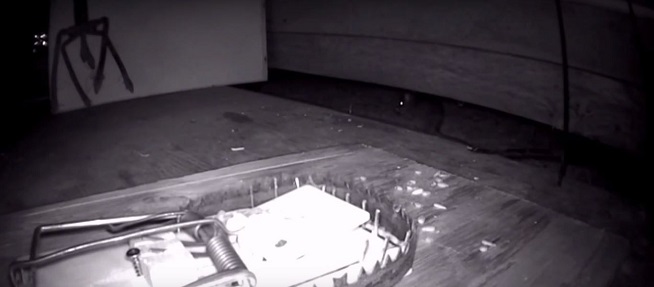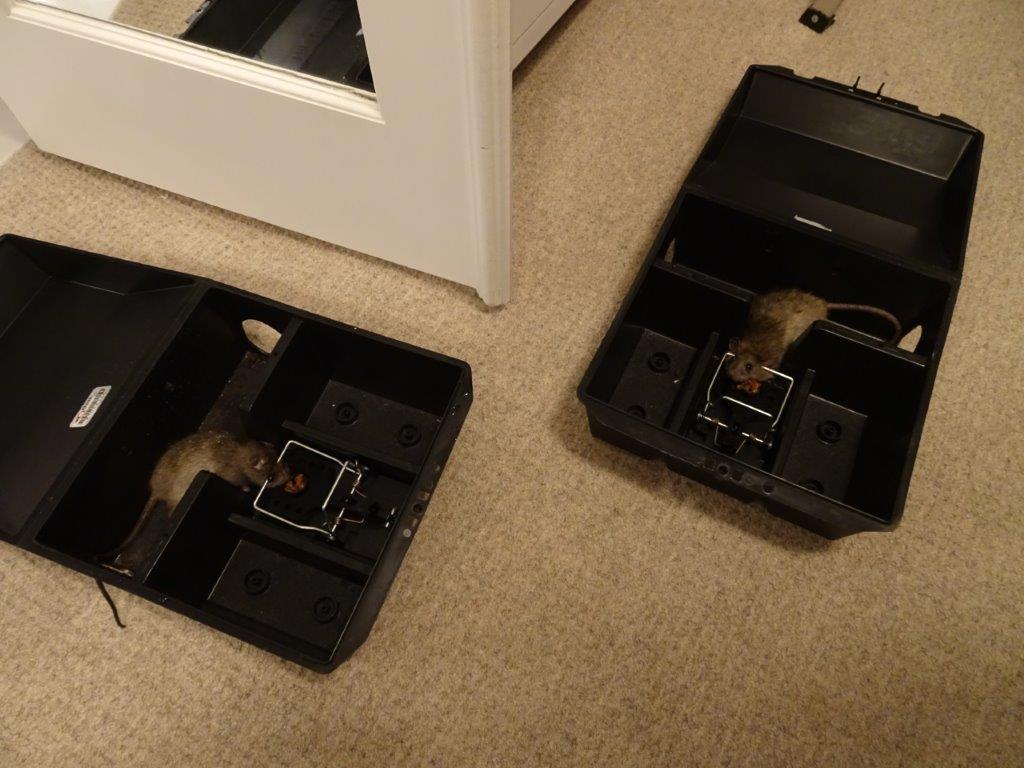Need professional rat help? What does it cost? Go to the home page
It won't take you long to find details on how to make a rat trap on the internet, but before you go ahead with whatever masterplan you think you may have created, we urge you to reconsider. Using homemade rat traps to try and catch them is not only probably going to be a total waste of your time, it's also going to be dangerous. Rats transmit many diseases, to human and other animals alike, and the majority of these are passed on via urine, usually contaminated soil or food and water sources. Fees are another disease-spreading culprit, and being in actual contact with the rat is just as bad. They can bite, scratch and even spread mites, fleas and ticks.
Bearing all of that in mind, a lot of the homemade rat traps that you have probably found details for seem a bit … dangerous, don't they? You could use a bucket and spoon / spindle / pole, for example, to try and encourage the rat to go after a dollop of peanut butter. The idea is that the rat jumps for the spoon with the sandwich filler smeared across the handle, and when it does, knocks the spoon off, causing both the rat and the spoon to end up in the bucket. If you have a big enough bucket with smooth enough sides, it's unlikely that the rat will be able to get out. However, you should bear in mind that rats have been known to jump close to four feet, both in height and in length. You'd need a rather large bucket for that. Also: if you have a plastic bucket, the rat can chew right through it. You'd need a big metal bucket, over four feet high.
It really would be cheaper just to buy snap traps.
Milk Bottles are another suggestion. This probably won't work at all for rats, particularly the fatter ones, but may have a little success against smaller mice. You are advised to oil the inside of the bottle to make it nice and slippery, and place some sort of wire around the outside of the bottle so that the rat / mouse can climb up it. There should be a really tasty bait inside the bottle, the idea to encourage the rodent to climb inside the bottle to get to the food and then find itself unable to get out. There are three HUGE reasons why this milk bottle trick won't work for rats, and a whole bunch of smaller reasons too, but let's get started with the big reasons:
1 - Rats are super cautious.
They probably won't go anywhere near that milk bottle, particularly if it is placed in their regular path out of the blue. Mice are more inquisitive and are more likely to take a peek, particularly if there is food involved.2 - You are put in close proximity with the rat.
We've discussed the dangers of this, particularly disease, so therefore should rule this homemade rat trap suggestion out immediately.3 - What are you going to do with a rat in a milk bottle?
You'd need to drive the milk bottle + rat at least four or five miles away from your home. In fact, we would advise closer to ten miles. You're then going to release a rat into an unknown territory. This is a very sociable creature who relies on and enjoys the companionship of other rats. It no longer has other rats on its team. It also no longer has a home, or any clue where the closest shelter is. It doesn't know where food is, or a source of water. There are much bigger predators out there too - owls, hawks and eagles take to the skies. These are creatures that the rat probably wouldn't ever have come across in the highly populated areas of your neighborhood. It's probably going to die.In short, homemade rat traps are a silly idea, and we wouldn't highly recommend against them. Snap traps are relatively cheap to buy these days, and you'll have a lot more success with them.
Go back to the Rats in the Attic home page.
Read more educational articles:
Should I ever poison a rat?
An analysis of inhumane glue traps for rats
Should You Use Electrocution Traps for Rats and Mice?
Which is easier to trap - mice or rats?

Rats have a short life span but grow in population at an alarming rate. If rats are not controlled at the initial stage, they can soon take up the whole house and before you know it, you will be dealing with a whole bunch of rats which is more challenging than you can imagine. It is better to take care of this problem at the beginning so that their population is controlled when it is still possible or else, they end up infesting your house which can have dire consequences. Thus, it is advised that you take care of their increasing population in the initial stages by taking necessary measures. One such measure involves using rat traps by luring them in through baits. There are various types of rat traps available which all have their respective pros and cons. You can even try to make a rat trap yourself. Rat traps can be expensive whereas making one at home can be quite budget-friendly. Also, homemade traps are less messy and easier to clean up. You do not need to go to a store and instead let your creative juices flow by making a rat trap yourself.
You will need 4 items to get started.
- Barbed wire
- Glue
- Toothpick
- Bait such as seeds, fruit, peanut butter, etc.
- Bottle of soda, 2 liters.
The steps to make a rat trap are mentioned below.
Step 1: Take the bottle of soda and cut 2 inches off of it.
Step 2: Take the glue and use it on the opening of the bottle.
Pro tip: Make sure you measure the barbed wire against the opening of the bottle so that it is of the same size. Anything bigger or smaller can create difficulty. For a better idea about how it should look like, picture a swinging door and, replicate its frame.
Step 3: Take the toothpick and glue it across the freshly cut opening of the soda bottle.
Step 4: Carefully place the toothpick at an optimal level. It should not be so high that the barbed wire is swinging outwards. At the same time, it should not be so low that the rat steps on it.
Step 5: Take the selected bait i.e. the peanut butter and put a spoonful of it at the untouched and uncut end of the soda bottle. The reason why peanut butter is used is that rats are very attracted to it.
Step 6: Now, place this bottle in a place where rats are commonly found. Once a rat enters the bottle to eat the peanut butter, it will be stuck. It will not be able to escape once it is inside the bottle since the toothpick will be supporting the barbed wire from swinging it to the outside.
That’s it! This is how you make a rat trap at home in a few easy steps. The best aspect of making this rat trap by yourself is the many advantages that come with it. Firstly, the rat is caught live. You can relocate it if you want to. Secondly, it is not messy as compared to traditional rat traps since it catches it alive. There are no remnants to clean after and no lingering smell that is left. Not to mention, this trap can be made in the convenience of your home. Lastly, the rats rarely escape from this rat trap since they cannot get to the entrance because of the barbed wire. This makes this rat trap very effective.








